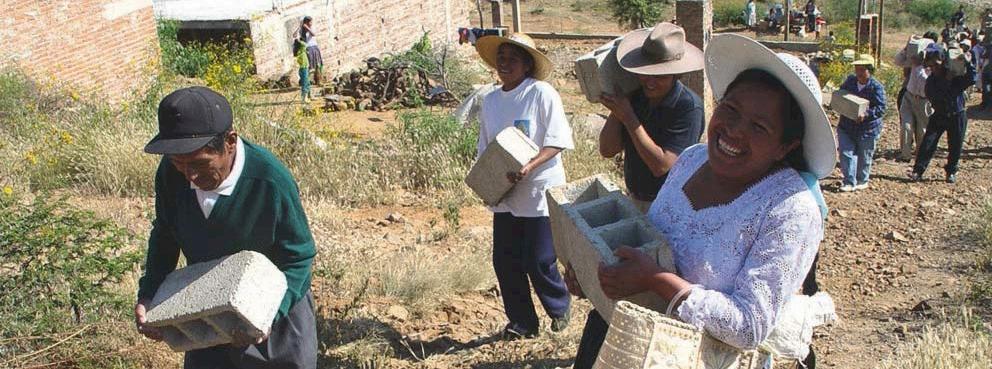
3 minute read
COOPERATIVE UFAMA AL SUR
Design for vulnerable communities
The Cooperative UFAMA al SUR in Montevideo is a mutual help housing project that turned derelict buildings located in the centre of the city into a lowrise, high-density complex of 36 housing units, a community centre, common areas, playgrounds and a garden rooftop for a group of Afro-Uruguayan women-headed families. The project was initiated in 1998 by Mundo Afro, a local community-based organisation which is predominantly focused on empowering the socially excluded black minority in Uruguay, which is clearly at a disadvantage in society.
Advertisement
The project takes place in the Sur Neighborhood, which is partially uninhabited and located in the centre of Montevideo which has historical and contemporary links with the Afro-Uruguayan community but is currently going through a process of gentrification which is leading to an increase in the rent prices, making them unaffordable for especially Afro-Uruguayan women-headed families which more often than not leads have to face being evicted and having to leave the neighbourhood. The project also aims also to corrects a historical injustice, as during the period of the military dictatorship, part of the AfroUruguayan in community in this area was evicted and sent to the periphery of the city
The Uruguayan NGO Ciudad y Region provided technical assistance, and joined with the UFAMA Cooperative, to form a participatory housing programme based on the principles of mutual help and selfmanagement of resources. This meant that the residents were at the forefront of the planning, design and management process. However, in order to optimise the final results, contractors also participated at many stages of the process. Further support was provided by the British Embassy in the form of provision of machines for construction, tiles and sanitary ware for toilets and kitchens.
An abandoned warehouse building was sold to the cooperative by the Municipality at a subsidy rate. Contributions in the form of labour were provided by the residents (worth approximately $86,665, 14% of the total cost) as the project allowed for different kinds and levels of work to be carried out by them, varying in terms of the necessary skill needed. Further cost reductions were possible as the management of the housing unit, sports facilities and the community centre are managed by the cooperative. Financial support was given by the Ministry of Housing as a housing subsidy (at a rate of $11,800, about 70% of the total cost) per family, a percentage of which is to be paid back by the residents in the following 5 years ($20/month) and once paid, each family legally becomes the official owners of the housing units. This clearly makes housing a lot more affordable and inclusive for low-income families as similar housing units in the neighbourhood are rented for $110/month.
The process allowed for affordable housing as each house unit has an area of 60m2 and is available for the same costs ($16,982) as a house with an area of 32m2 in the outskirts of the city which is normally offered to families with similar incomes to the ones in the cooperative (under $300/month).
The housing units also have the added benefit that improvements in the form of addition and/or reconfiguration of internal subdivisions are possible.
What makes the project particularly interesting is that this is one of the very few examples of regeneration in the central area of the city as most of the mutual aidprocesses and participatory processes tend to take part in the periphery. Uruguay has a high number of high-quality housing and buildings in good state that can easily be renovated in the central areas of the city yet the number of informal settlements in the periphery keep rising which leads to inhabitation of housing and buildings in the centre, a process that seems to be reinforced by laws and common practices. This project shows it is possible for urban regeneration to take place whilst preventing the gentrification process that it is usually preceded by whilst also providing quality housing to low-income families. Furthermore, the location of the project also meant that energy saving in terms of transport was favoured as the families are closer to the centre of the city.
The mutual aid-process has allowed for ties between members of the community to be formed and also for employment for members of the cooperative or their relatives to be created. Training in construction was provided by Ciudad Y Region which allowed residents to further acquire skills that could be later employed as a way of income generation. It has also benefited the neighbourhood by promoting gender equality and making it more socially and ethnically diverse, which led to long term sustainability.
It is important to note that the project nearly failed as many neighbours reacted with hostility as a result of prejudice and/ or misunderstandings which led them to believe the project was against their interest, this is something that had to be overcome through long discussions, negotiations and most importantly, focusing on building relationships with the neighbours.










